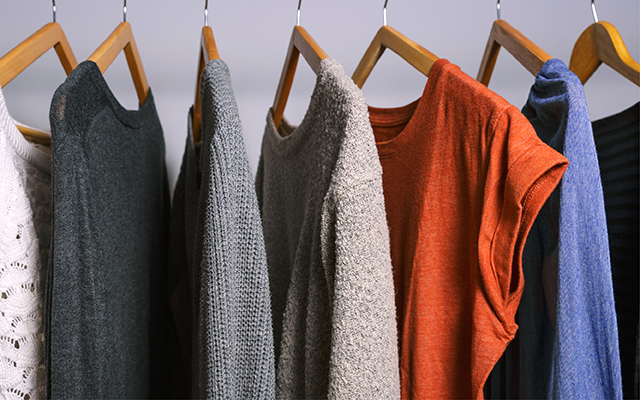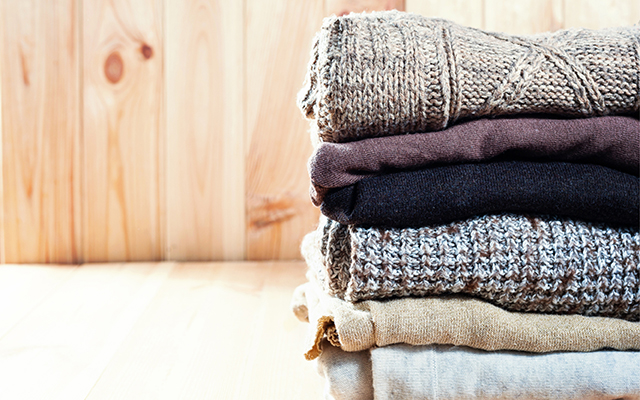Fashions these days are changing at warp speed. Clothing companies rush to meet the demands of those wanting the latest runway knockoffs, while the ease of one-click ordering offers the feel-good hit of a new outfit.
At one point in the not-so-distant past, fast-fashion retailers, such as H&M and Zara, provided the fix. But they’re now being eclipsed by ultrafast fashion — sold by online-only companies, such as Shein and ASOS. By using lower-quality fabrics and construction, preying on cheap labor, and accelerating production even further, they offer an unparalleled variety of the latest duds at prices you simply can’t refuse. Shein releases 2,000 to 8,000 new items daily.
Instant gratification has its drawbacks.
According to a 2019 United Nations report, the fashion industry uses 24.6 trillion gallons of water each year — enough to meet the needs of 5 million people. And the industry dumps into the ocean half a million tons of microfiber annually — the equivalent of 3 million barrels of crude oil. Plus, the fashion world is responsible for more carbon emissions than all international flights and maritime shipping combined.
“Historically, it’s a piggish industry built on exploitation and gluttony,” says Deirdre Clemente, associate professor of history and curator of 20th-century American material culture, specializing in clothing and fashion at University of Nevada, Las Vegas.
The human-rights and environmental costs of the latest in ultrafast fashion are not included in the price tag.
That’s the bad news. The good news? You can still be fashionable without supporting the system. These tips can help you build a healthier “slow-fashion” wardrobe while also protecting the planet.
Tip 1
Reduce consumption.
It can be hard to resist the dopamine hit delivered by clicking “buy now” while shopping for new duds. Clemente notes that the pandemic has allowed us to reexamine our consumer habits: “We need to look more critically at what we own and what we need. Sustainability starts with ourselves.”
Quitting cold turkey is not only likely to backfire; it’s also unrealistic because, well, everyone wears clothes. Alternatives that offer the thrill of the hunt at an affordable price? Buy secondhand, thrift, or vintage, from traditional shops or websites such as Mercari, ThredUP, or Poshmark.
Tip 2
Build a capsule wardrobe.
We typically wear 20 percent of our wardrobes 80 percent of the time. And chances are, those are the most well-made, well-fitting, comfortable options in your closet. So it pays to invest in good threads.
For one producer, on-demand fashion is key to reducing consumption. Meghan Litchfield is the founder of RedThread, an on-demand apparel brand that offers custom-fit clothing delivered to your door. Designers create pieces, bespoke-style, in a sustainable sewing practice in Reno, Nev.
“The dirty little secret about the traditional [size-run] method is that you mass-produce all these sizes offshore, transport them on boats or by air, and then the unsold units end up in a landfill,” Litchfield says.
Tip 3
Start at the source.
Not all fabrics are created equal: Some are made from plastics, others from plants. “The fundamental reason we have fast fashion is that we can just say, ‘We don’t have to shear a sheep to make extra shirts; we can get it from plastic or textile distributors.’ There wouldn’t be fast fashion without synthetic fibers,” explains Clemente.
But even natural fibers differ in their environmental toll. Charlie Bradley Ross, founder and director of the Sustainable Fashion Collective and Offset Warehouse, focuses on sourcing sustainable fabrics for designers. “Cotton, for example, is a fabric we are all led to believe is natural and therefore good — which it certainly is if it’s organically produced,” she says. “But commercially grown cotton is not.”
“Occupying more than 55 percent of the world’s cultivated land, its production is responsible for releasing $2 billion of chemical pesticides into the environment every year,” she explains. “Just under half of these chemicals are toxic enough to be classified as hazardous by the World Health Organization.”
Bradley Ross says we can make better choices to reduce environmental impact and improve our self-image. “I love sourcing and designing fabrics made with more unusual fibers — such as hemp, soy, bamboo, and banana — that are cultivated in a sustainable way.”
And though more ethical fibers have suffered negative reputations, she is increasingly finding soft, fashionable fabrics in eco-fiber versions, including hemp-silk blends in stunning colors.
Tip 4
Drive demand with your dollars.
Question where your fashion comes from, including what it’s made of, who makes it, and how it’s delivered. Then carefully choose pieces that fit your personal sustainability criteria: Your purchase will help steer the larger companies to better behavior because they’ll follow the money.
Being discerning is not simple, Clemente warns. “Being a sustainable-fashion advocate will take more work. Like recycling, no one takes it out for you and sorts it. Do the research on companies that are really trying versus gimmicking.”
“With systemic change, the fashion industry can lift millions of people out of poverty, providing them with decent and dignified livelihoods. It can preserve and restore our living planet,” says Bradley Ross. “Fashion can be a powerful force for good — bringing people together as a source of joy, creativity, and expression.”
Clothing Conservation
Preserving what you have is a big part of cutting waste. Laundry evangelist Patric Richardson, coauthor of Laundry Love: Finding Joy in a Common Chore and star of the show The Laundry Guy, offers tips for taking care of what’s already in your closet.
- Extend its life, no matter what its life is. Who cares if it’s expensive or cheap — you like it! Whether it’s an heirloom or an item you extend for three seasons rather than one, that’s environmentally a better choice.
- Express wash, warm water. Contrary to popular belief, warm-water wash will not ruin clothes more quickly. Any energy you gain from using cold water is negated by the length of the cycle and wear and tear on clothes from abrasion in the machine. “Warm” water is not even warm enough for a bath for humans, and newer machines use only about 4 gallons of water.
- Hang everything up. Tumbling in the dryer is not the environmental choice — or the best choice for clothes, because the real problem is the abrasion. Lint is your clothes dying, and abrasion shaves years off their lives. Get a drying rack. Clotheslines are heaven.
- Don’t wash it just because you wore it. Richardson says, “I wear my jeans at least 10 times before I wash them, and I call myself the Laundry Guy.”
- Learn how to remove stains. Most of them take two seconds to get out. Use some laundry soap or a laundry bar; scrub the stain with a wet brush; and rinse.
- Wear what works for you. Wearing something a lot is better than having a few things you wear twice.
- Explore other ways to get a fashion fix. Once you know how to remove stains and care for fabrics, you can buy thrift, vintage, or from estate sales. It’s a good cheap thrill, and it’s sustainable.
This article originally appeared as “Putting the Brakes on Ultrafast Fashion” in the December 2021 issue of Experience Life.





This Post Has 0 Comments